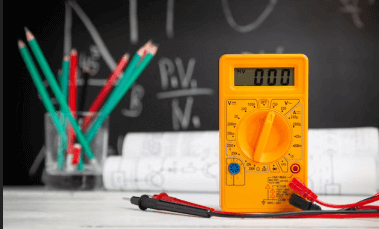Question
a.
True
b.
False
c.
May be True or False
d.
can't say
Posted under Electronics and Communication Engineering
Interact with the Community - Share Your Thoughts
Uncertain About the Answer? Seek Clarification Here.
Understand the Explanation? Include it Here.
Q. In a purely resistive circuit the instantaneous power varies from zero to maximum twice in each cycle.
Similar Questions
Explore Relevant Multiple Choice Questions (MCQs)
Q. In a series resonant circuit, the resonant frequency is
View solution
Q. If a function Z(s) has a pole at infinity, then
View solution
Q. A circuit said to be lumped when physical dimensions of all the component are __________ .
View solution
Q. RMS value of a square wave is the same as peak value.
View solution
Q. Out of Metal-film type and Carbon-film type, the one with better tolerance specification is
View solution
Q. The current flowing through a pure capacitor is called displacement current.
View solution
Q. An active network has
View solution
Q. Which of the following material has nearly zero temperature-coefficient of resistance?
View solution
Q. Poor power factor
View solution
Q. If two networks are cascaded then
View solution
Q. When a series RL circuit is switched on to a dc voltage, the rate of change of current is maximum at t = 0.
View solution
Q. At very low frequencies a series R-C circuit behaves as almost purely __________ .
View solution
Q. In a composite filter terminating half sections are used for impedance matching.
View solution
Q. The bridge is balanced when the value of R is
View solution
Q. When a series RL circuit having power factor angle 0 is switched on to an ac voltage Vm sin (ωt + Φ), the transient term is zero if Φ = 0.
View solution
Q. A series resonant circuit is capacitive at f = 150 Hz. The circuit will be inductive somewhere at
View solution
Q. A current increasing at the rate of 1A/s is passed through a 1 H inductor. At t = 0, i = 0. The flux linkages after 1 sec are
View solution
Q. When an ac circuit has sources of different frequencies, the only method of analysis is superposition theorem.
View solution
Q. In a Parallel connection of circuit the bandwidth in terms of R, L, C is
View solution
Q. It two voltages are v1 = 100 sin (ωt - 30°) and v2 = cos ω t then
View solution
Recommended Subjects
Are you eager to expand your knowledge beyond Electronics and Communication Engineering? We've handpicked a range of related categories that you might find intriguing.
Click on the categories below to discover a wealth of MCQs and enrich your understanding of various subjects. Happy exploring!








